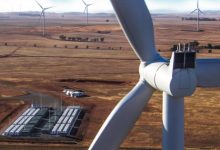Leading energy expert Tim Nelson says the extension of the Renewable Energy Target is the “easiest thing we could do” to decarbonise Australia’s electricity sector in line with climate and renewable energy goals.
Speaking on a panel at the 10th Australian Emissions Reduction Summit in Sydney on Friday, Nelson, who is executive general manager of energy markets at renewables giant Iberdrola, said that short of introducing an economy-wide carbon price, an expanded RET was the best way to reboot the currently flagging market.
According to the latest data from the Clean Energy Council, just 0.4GW of new renewables investment was financed in the first half of 2023 – a fraction of the 5GW needed to to meet the federal government’s 82 per cent renewables by 2030 target.
Nelson says that the best way to drag Australia back up to speed is to go back to “first principles” and see what has worked in the shift to the renewables, so far, and what hasn’t.
“We’ve got this amazing architecture called the Renewable Energy Target. It’s very, very well understood.
“Probably the easiest thing we could do is tweak it so that we basically expand it out to hit that 82% by 2030, and beyond,” he told the summit.
Nelson, who has previously served as chief economist at AGL Energy, the country’s biggest coal generator, argues there needs to be a pivot back to market-based mechanisms that direct investment to where it is needed most in the shift away from fossil fuels.
And he says government interventions like writing contracts for difference for renewables, or propping up ageing coal plants, are sending all the wrong signals while failing to solve the grids most pressing problems, including catering to the extremes of demand emerging on either side of the solar duck curve.
“Minimum demand … in South Australia is getting to the point where AEMO is pulling its hair out going, ‘how do we make this this work?’
“You’re managing a power system with a minimum demand of 90MW and a maximum demand of 3000MW – that’s hard to do.”
The answer, says Nelson, is to prime the market for battery storage – both big and small. It is not, however, to keep old coal generators running.
“I find the debate around keeping coal-fired power stations by issuing them with a cheque is really bizarre given that minimum demand issue,” he told the summit.
“The analogy I use is you can give me $500 million to win gold at the Olympics, [but] I’m physically incapable of doing it. And it’s a little bit the same with coal-fired power stations operating through that middle of the day.”









